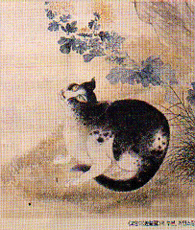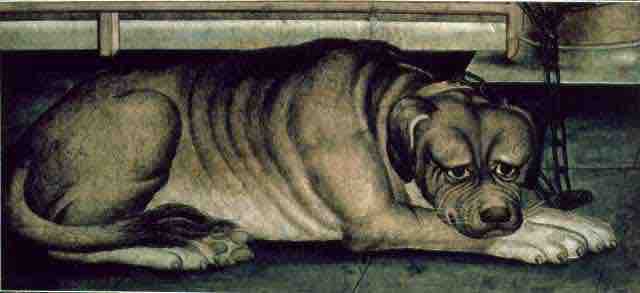Overview: Art of the Joseon Dynasty
The Joseon Dynasty (1392-1910) has left a substantial legacy on modern Korea. Much of modern Korean artwork—as well as etiquette, cultural norms, societal attitudes towards current issues, and the modern Korean language and its dialects—are derived from the culture and traditions of the Joseon era. During this period, the influence of Confucianism superseded that of Buddhism. Buddhist elements remained, however, and Buddhist art itself continued. Buddhist art was encouraged not by the imperial centers of art or the accepted taste of the Joseon Dynasty publicly, but in private homes and in the summer palaces of the Joseon Dynasty kings. The simplicity of Buddhist art was given great appreciation but was not seen as citified art.
Early Period
While the Joseon Dynasty began under military auspices, styles from the earlier Goryeo Dynasty (918-1392) were left to evolve, and Buddhist iconography (such as images of bamboo, orchids, plums, chrysanthemums, and the familiar knotted good luck symbols) continued to play a large role in genre paintings. Neither colors nor forms underwent real change, and Joseon rulers stood aside from making any edicts on art. Chinese Ming ideals and imported techniques continued to influence early Joseon Dynasty works.
Early Joseon landscape painting by Seo Munbo in the late 15th century
Early Joseon paintings often followed the Chinese style of idealized general landscapes.
Middle Period
Beginning in the mid-Joseon era, painting styles moved toward increased realism. A national painting style of landscapes called "true view" began, moving from the traditional Chinese style of idealized general landscapes to exactly rendered particular locations. While not photographic, the style was academic enough to become established and supported as a standardized style in Korean painting.
Arahat, Joseon buddhist painting in the 16th century Korea
Although the influence of Confucianism superseded that of Buddhism during the Joseon Dynasty, Buddhist art itself continued.
Late Period
The mid-to-late Joseon dynasty is considered the golden age of Korean painting. It coincides with the shock from the collapse of Chinese Ming Dynasty (1644), the accession of the Manchu emperors in China, and the forcing of Korean artists to build new artistic models based on an inner search for particular Korean subjects. At this time, China ceased to have a preeminent influence in Korean art, and painting in Korea took its own course, becoming increasingly distinctive from traditional Chinese painting. Paintings from this era also showed increasing influence from the West.

Joseon Dynasty painting by Owon
Owon was the pen name for Jang Seung-eop (1843 - 1897), a painter of the late Joseon Dynasty in Korea. He was one of the few painters to hold a position of rank in the Joseon court.

A late Joseon painting.
This painting from the late Joseon period—considered the golden age of Korean painting—shows some influences of the Western painting techniques introduced to Joseon.